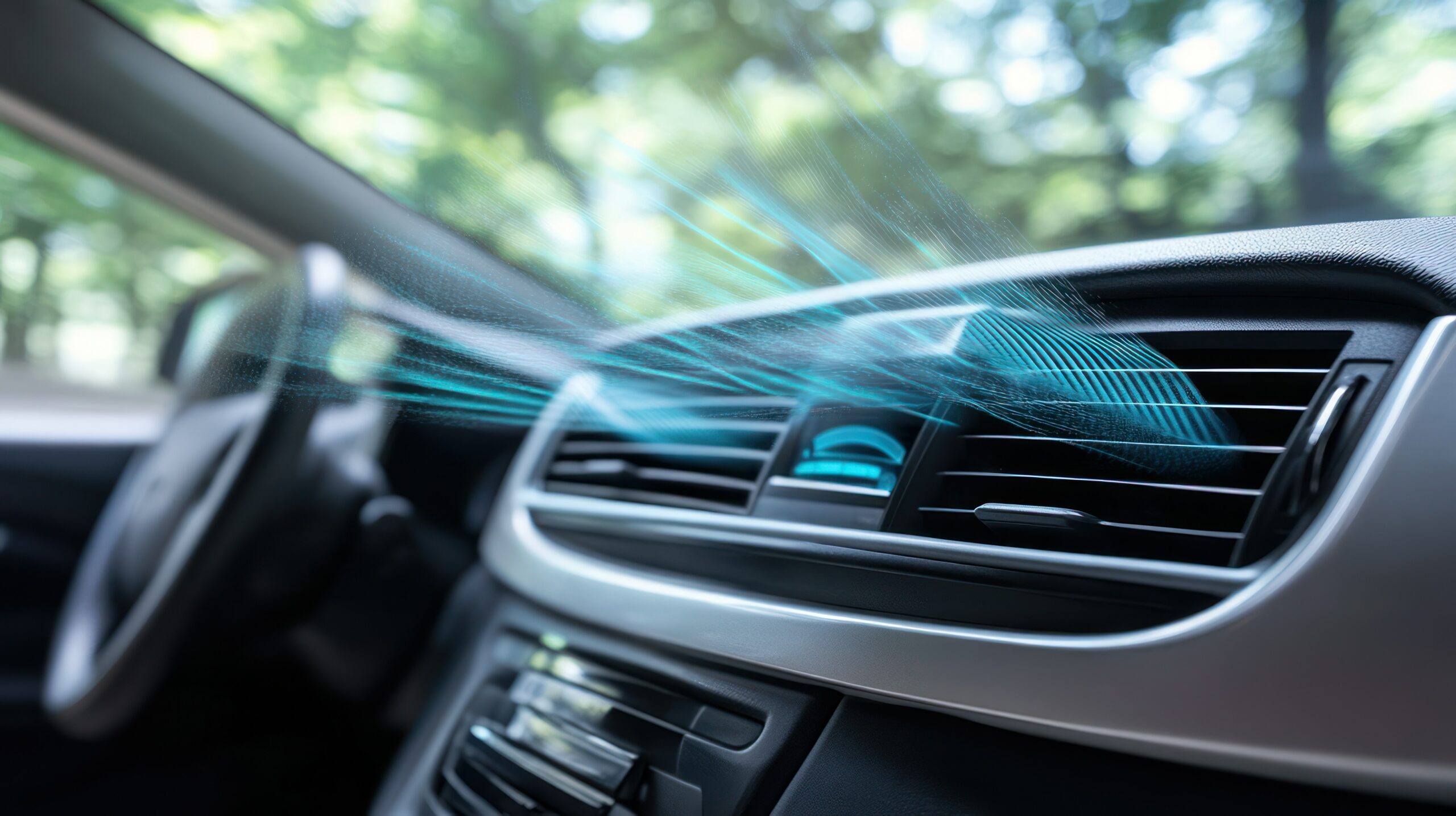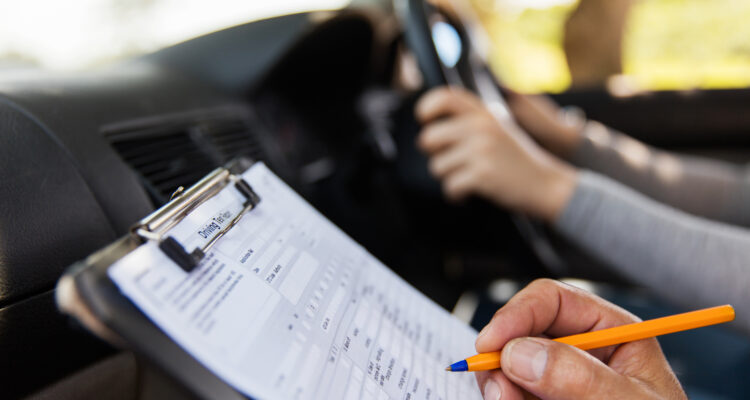Please note: air conditioning buttons and settings may vary depending on your vehicle. For full details on how to use your vehicle’s air conditioning correctly, check your vehicles handbook.
Spring is finally here and soon so will be some warmer weather. Whether you love it or hate it, you might find yourself needing to escape it. There’s nothing like the cool kiss of the air conditioning, but do you ever find yourself pressing the buttons randomly trying to get the perfect setting?
Air conditioning systems have improved significantly over the years, offering various features and controls. However, with the multitude of buttons and settings, it can be confusing to understand their functions.
In this article, we will explain the air conditioning buttons and their use, helping you make the most of your vehicle’s AC system.
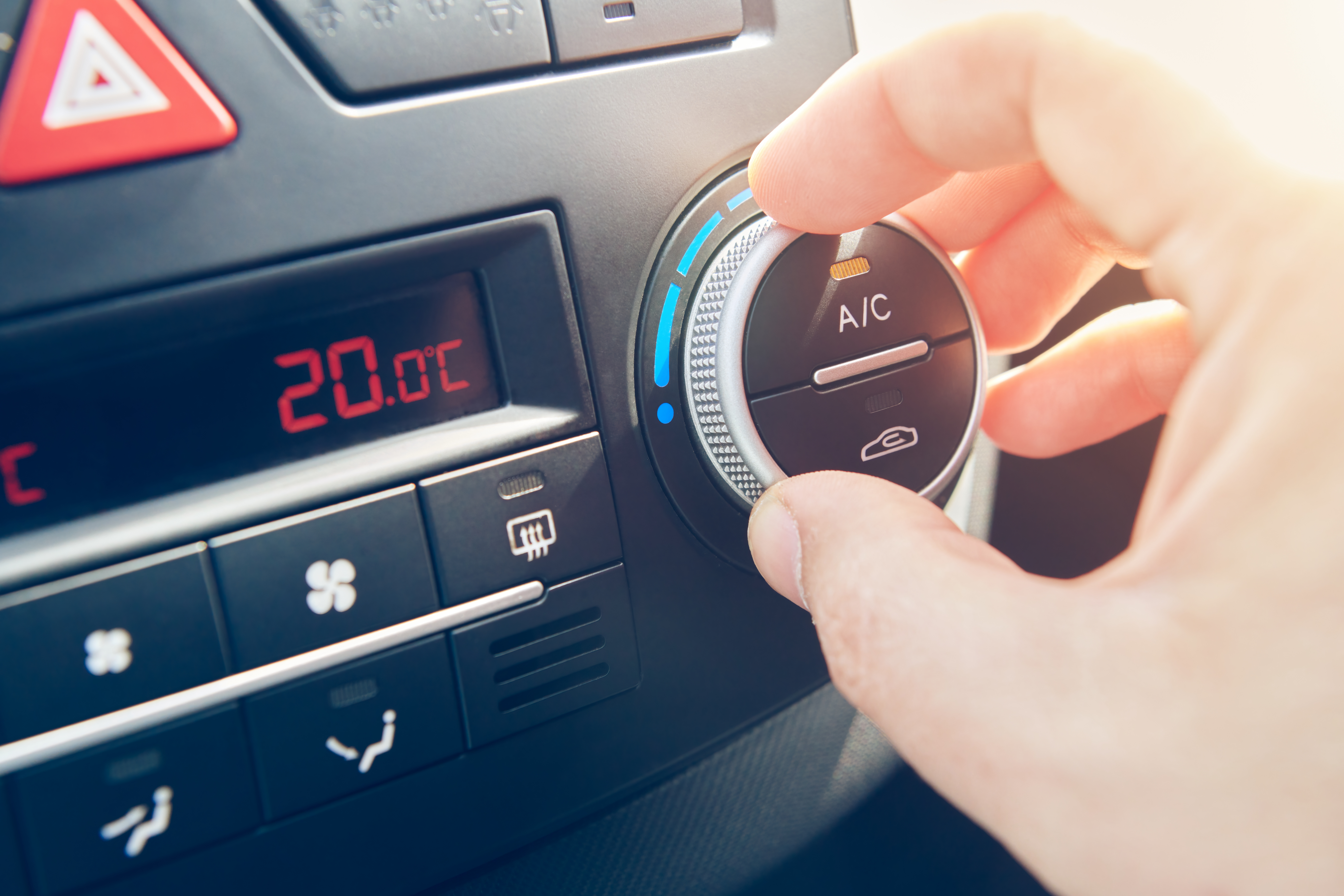
How do I know if I have AC?
From the 1980’s air conditioning became a standard feature in new cars, particularly in regions with hot climates. By the 1990s and 2000s, it was rare to find a new car without air conditioning, and today it is considered a standard feature in most vehicles. Just look for the button labelled ‘AC’. If you don’t have this button in an older car, you’ll likely just have ‘blowers’ or will have to open a window to cool down.
How do I turn on my car’s AC?
Most car’s air conditioning power systems can be identified by the letters ‘AC’ on the button or screen, depending on your car model. However, in some cases, this can be identified by a snowflake symbol. The power button is the primary control that activates the air conditioning system. It turns the system on or off. When the AC is turned on, it starts cooling the air inside your vehicle.
How do I adjust the temperature of my car’s AC?
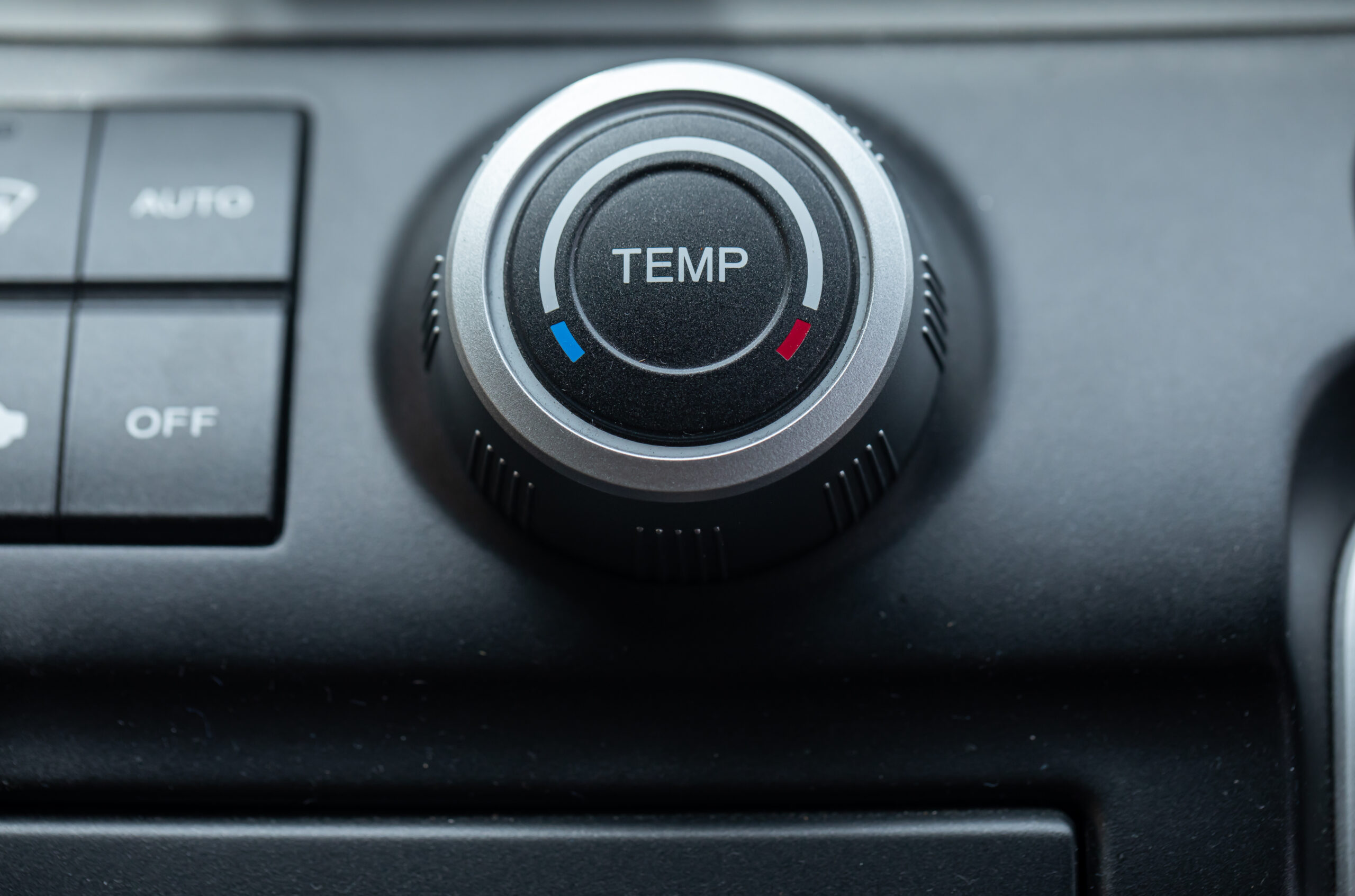
The temperature dial control allows you to adjust the level of cooling or heating. It usually consists of two buttons or dials, labelled blue for cooling and red for heating. By turning the dial or pressing the buttons, you can set the temperature to whatever you like.
How do I adjust the fan speed of my AC?

The fan speed control is nearly always labelled with numbers up to 4, or with a fan picture and series of higher and higher lines to indicate the intensity of the air flow. Choosing a higher setting increases the airflow and cooling/heating effect, while a lower setting reduces it and makes it more subtle. Experiment with different fan speeds to find the one that suits your preferences.
What do the symbols on the AC dial mean?
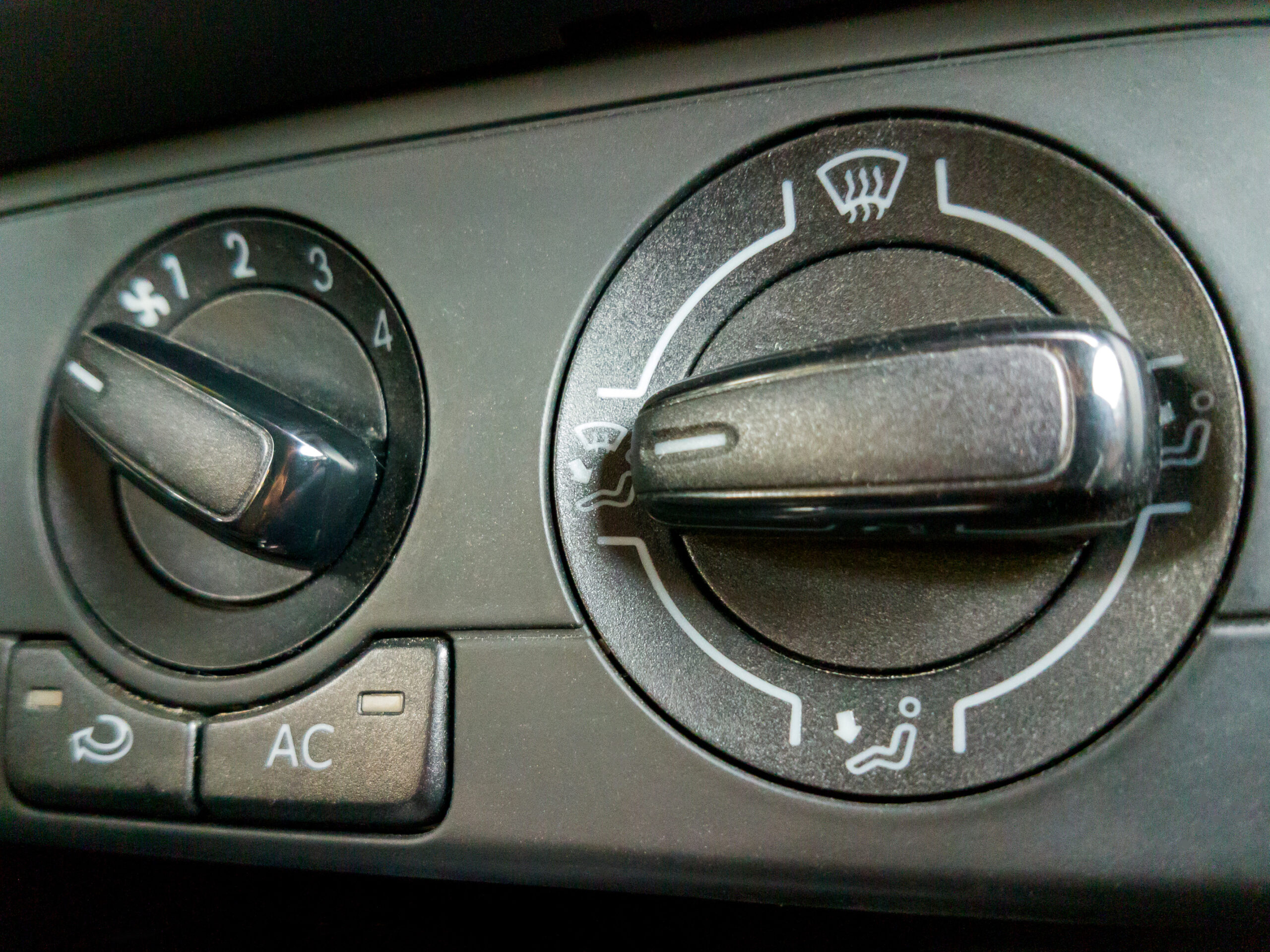
The air distribution buttons determine where the air is directed inside the vehicle. Just look at where the arrow is pointing to on the body and that’s where the air will aim. Here are the common air distribution options:
- Windscreen: The defrost setting is designed to remove condensation and defog the windshield. It directs the airflow towards the windshield and side windows, getting rid of condensation and improving your visibility. It looks like the shape of a windscreen with squiggly lines through it horizontally.
- Face: This setting directs the airflow towards your face and upper body. It will look like a person sat down with an arrow pointing towards their face.
- Feet: Selecting this option directs the airflow towards your feet, useful during cold weather when you want warm air to reach your lower body. Again, this looks like a person sitting down with an arrow pointing at their feet.
- Upper body and windscreen: This setting focuses the airflow on the upper body, which can be helpful when you want a balance of cooling or heating without air blowing directly on your face. It also distributes air up at your windscreen, making sure it doesn’t get fogged up. This looks like the windscreen symbol described above along with the outline of a person with an arrow pointing at their torso.
The Recirculation Button
The recirculation button looks like a car symbol with a U-turn arrow inside. This controls whether the air conditioning system uses fresh air from outside or recirculates the existing air inside the vehicle. In summer it’s a great feature. It recirculates the cool air that comes out of the A/C when you first turn it on instead of trying to cool down new hot air from outside. In summer, this button will assist the AC system, reducing fuel consumption and save power. It can reduce strain on the system and keep your air filters cleaner for longer which increases the longevity of your car.[1]
You should avoid using the air recirculation button in the winter. Pressing the recirculated air button for hot air doesn’t stop the cold air from entering your vehicle. Turning the button off moves cold air through the car’s heaters, making the air warmer.
Remember, it’s important to switch to fresh air mode periodically to maintain air quality inside the vehicle.
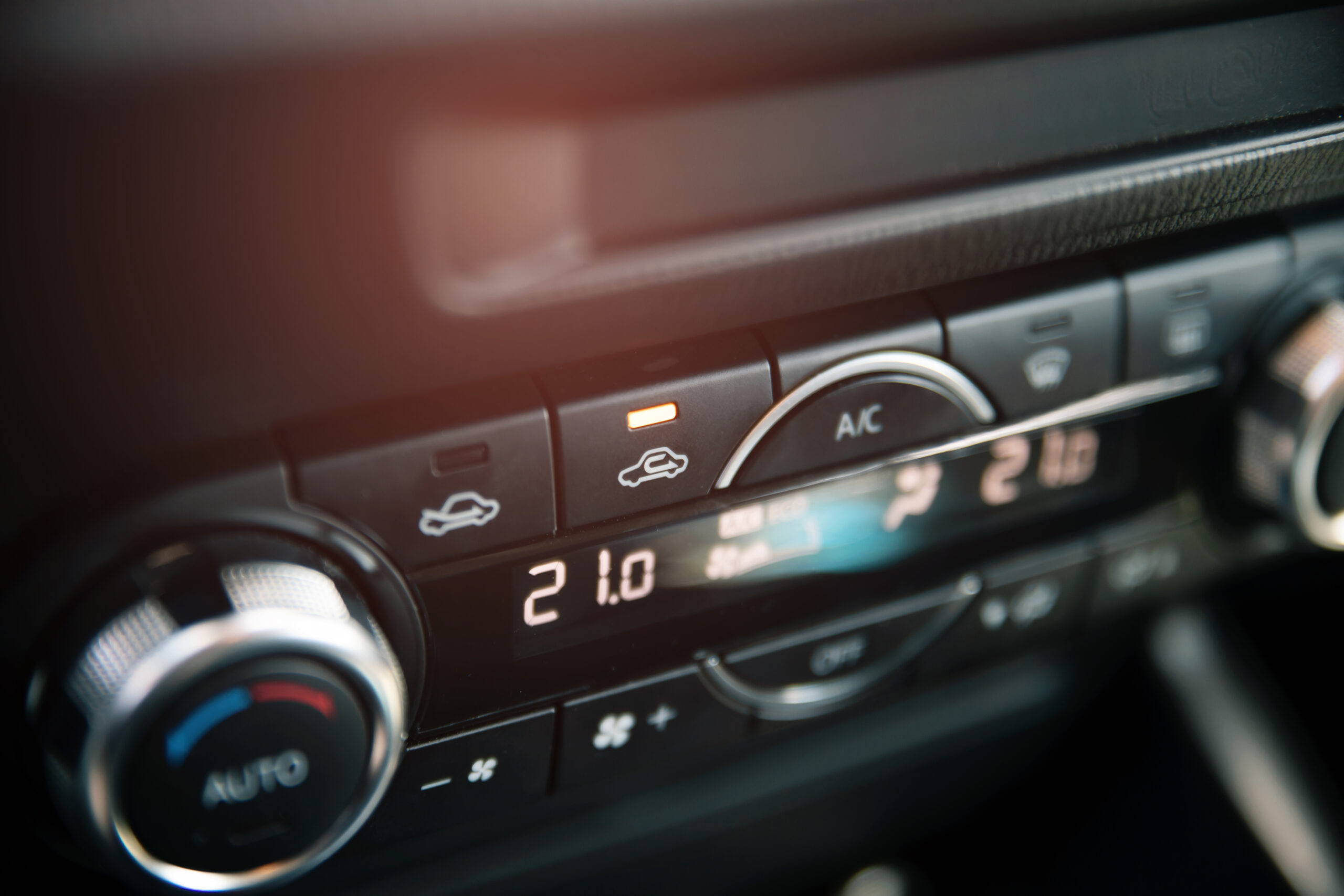
Auto Mode:
Many modern vehicles offer an auto mode feature. The system automatically adjusts the temperature, fan speed, and air distribution based on the desired cabin temperature you set.
This mode ensures optimal comfort without manual adjustments. For example, if you select your temperature to 19 degrees Celsius, the air con will automatically adjust the fans to reach this temperature. On a hotter day, this could mean maximum fans with cooler air. Once the desired temperature is reached it will reduce the AC power enough to keep a steady temperature.
Does using air conditioning use a lot of fuel?
If you’re worried using your air conditioning will use up fuel, there are ways to fix this. When you start your journey, try opening the windows for a few minutes to let out the hot air in the car. This way, your air conditioning won’t have to work as hard.
Despite what many people think, driving with open windows doesn’t have a big impact on fuel when you’re driving slowly. So, opening windows can save more fuel than using the air conditioning. However, on high-speed roads, it’s better to use the air conditioning because open windows can create extra drag and use up more fuel.
In terms of fuel usage, the best option is to drive without air conditioning and with closed windows. But on hot days, that may not be practical or comfortable.
Now you know these controls, you can achieve the desired temperature, airflow, and air distribution. Enjoy a pleasant journey regardless of the weather outside.
If you enjoyed reading this, check out How to Change a Flat Tyre.
